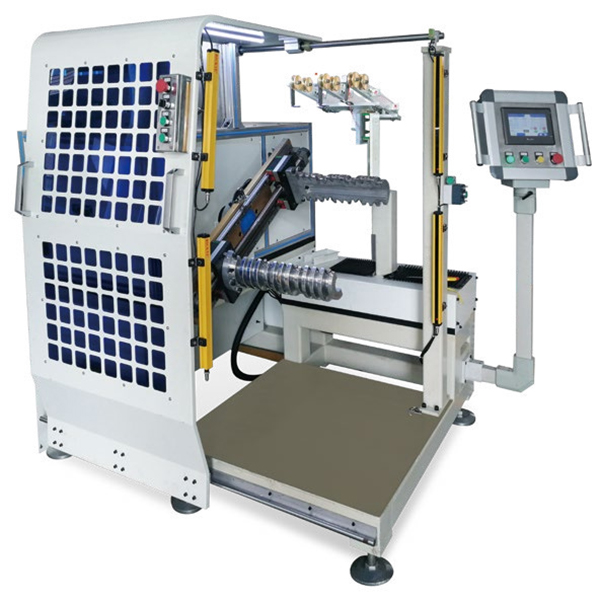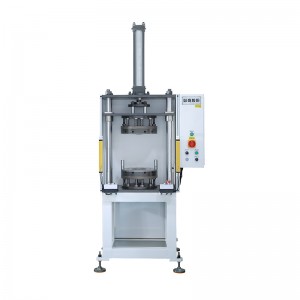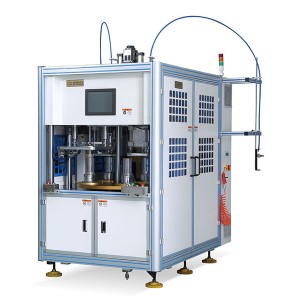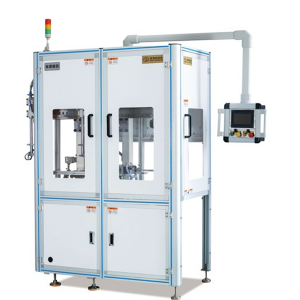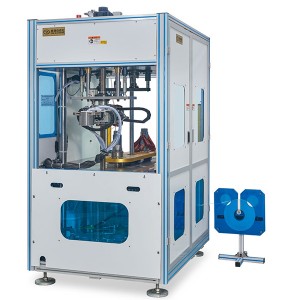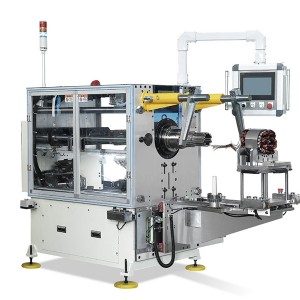High-Power Winder
Product Characteristics
● This machine is suitable for winding high-power motor coils. The special CNC system realizes automatic winding, wire arrangement, slot crossing, automatic wax pipe crossing and output setting.
● After winding, the die can automatically expand and retract without removing the coil, which greatly reduces the labor intensity of the workers and improves the work efficiency.
● The same series of stator coil conversion die can be adjusted to meet the requirements of multi-strand winding, stable and adjustable tension, and ensure the standardized production of products.
● Automatic alarm for line missing,Safety protection is reliable, the door opens automatically to stop, protecting the personal safety of operators effectively.
Product Parameter
| Product number | RX120-700 |
| Flying fork diameter | Φ0.3-Φ1.6mm |
| Rotation diameter | 700mm |
| Number of working heads | 1PCS |
| Applicable base number | 200 225 250 280 315 |
|
Cable travel |
400mm |
|
Maximum speed |
150R/MIN |
| Maximum number of parallel windings | 20pcs |
| Air pressure | 0.4~0.6MPA |
| Power supply | 380V 50/60Hz |
| Power | 5kW |
| Weight | 800kg |
| Dimensions | (L) 1500* ( W) 1700* (H) 1900mm |
FAQ
Problem : Conveyor Belt Not Working
solution:
Cause 1. Make sure the conveyor belt switch on the display is turned on.
Reason 2. Check the display parameter settings. Adjust the conveyor belt time to 0.5-1 second if it is not set correctly.
Reason 3. The governor is closed and cannot work normally. Check and adjust to an appropriate speed.
Problem: The diaphragm clamp may detect a signal even though the diaphragm is not connected.
Solution:
This happens for two reasons. First, it may be that the negative pressure value of the test gauge is set too low, resulting in no signal being detected even without a diaphragm. Adjusting the setting value to a suitable range can solve the problem. Second, if the air to the diaphragm seat is blocked, it may cause the signal to continue to be detected. In this case, cleaning the diaphragm clamp will do the trick.
Problem: Difficulty attaching the diaphragm to the clamp due to lack of vacuum suction.
Solution:
This problem can be caused by two possible reasons. First of all, the negative pressure value on the vacuum gauge may be set too low, so that the diaphragm cannot be sucked normally and the signal cannot be detected. To solve this problem, adjust the setting value to a reasonable range. Secondly, it may be that the vacuum detection meter is damaged, resulting in a constant signal output. In this case, check the meter for clogging or damage and clean or replace if necessary.

